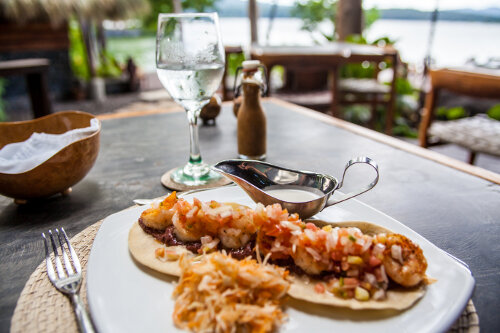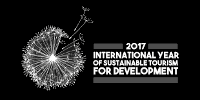Can we put a Price on Nature? A Natural Paradox
/Our planet offers us a sublimely rich and diverse environment that is irreplaceable. This is a fact that we all know, yet we take this for granted. The question is how do we change this lackadaisical attitude, whereby we merely expect our environment to be there, to one that we acknowledge and appreciate what we have? A guest blog by Shana Vida Gavron, CEO and Founder, Endangered Wildlife OÜ.
Perhaps the best way to approach this question is to completely defer away from the environment to something simple that we do appreciate – for example footwear. Approximately 27% of the money spent on global athletic footwear is to purchase Nike shoes, and this is despite the fact that it has the highest average price. What makes so many people willing to pay a premium for a pair of Nikes in place of a brandless pair of shoes? Ultimately, we as a population, place value on those different shoes and people value Nike shoes more. This is easily translated with a simple price tag that people can understand and relate to and, seemingly, as price goes up, the item is appreciated more and looked after better.
Applying Value to Nature?
Yet nature, upon which our survival depends, is perceived differently. People can argue it is not right to consider a price tag on nature and that it is priceless, but this is a societal failure. By not considering a price or value for nature, society lacks the same appreciation for nature as it has for a pair of shoes. Such is the paradox – we cannot say that nature should not be valued, because, until nature is valued, humans will not appreciate the primary asset that we all know provides the greatest value to society.
What’s the Price of Nature?
Nature, though, is a unique asset. Pricing nature is not as simple as pricing a pair of shoes. The benefits are more complex to calculate, and it requires in-depth analysis and assessment of each species. Considering that there are an estimated 8.7m species, this is quite a task to tackle.
Having said that, though, it is not an impossible task. Different species provide different services to society and the environment, and each of these, taken on their own, can be translated into a monetary value. If you were to think of it in simple terms, how much would you pay to see your favourite animal in the wild? How much would you pay for a plate of food? How much would you pay for wooden furniture? These are all things generated from nature that can be translated into a financial value.
How can Nature be valued?
This is what Endangered Wildlife OÜ has achieved: managed to break down the complexity of individual species into relatable financial values, taking into consideration the various individual attributes of the specific species. The approach uses a proprietary multi-disciplinary valuation methodology that combines environmental, financial and statistical techniques to allow people to understand the importance of the survival of a species in a relatable manner using financial price tags.
Take, for example, the mantled howler monkey (Alouatta palliata) in Mombacho, Nicaragua. People travel to Mombacho to see them in the wild, giving up work days to travel there and incurring the cost of flights. These tourists pay for their stay in Mombacho, which creates employment and generates economic growth for the region. Without this population of mantled howler monkeys, there will be some people who would not travel to Mombacho and this would result in a loss of income for locals.
But that is not the whole story – the mantled howler monkey, in this circumstance, does not live in isolation. It interacts with other species and is a key seed disperser. So, if the mantled howler monkey were to disappear, what could the resulting impact be – perhaps fewer trees would grow and other species’ populations begin to take strain due to a lack of food. This now begins to have further reaching implications and represents the proverbial house of cards.
The Mombacho mantled howler monkey population is one of the 80 plus species populations that Endangered Wildlife OÜ has valued. Taking the specifics of the population and the location into account, we found that this population’s Species Existence Value is worth EUR 2.7m and the impact value of their presence in the region is worth an additional EUR 0.3m. This would translate to a total value per individual of c. EUR 3,095. To put this value into perspective, the average GDP per capita in Nicaragua is EUR 1,390.
What’s Tourism got to do with the Value of Nature?
Tourism, in particular, contributes to the overall value of biodiversity. But there needs to be a balance so as to prevent tourism from overexploiting nature. Conscious tourism (like all Earth Changers is) has the potential to support the value and longevity of our nature, especially if it is able to allow people to encounter the wonders of the Earth’s diversity in a non-invasive and natural way. The Mombacho case is a prime example of how a species’ value can be driven by the value of tourism, but with a limited number of annual visitors enjoying the splendour of the region’s cloud forests.
We Need to Value Nature
Biodiversity is integral for humanity, and society is at a point at which it needs to acknowledge this fact and to begin to take responsibility for future generations. While some may disagree with the concept of valuing biodiversity, perhaps this will be one way to use human nature to the advantage of our fellow species.



















